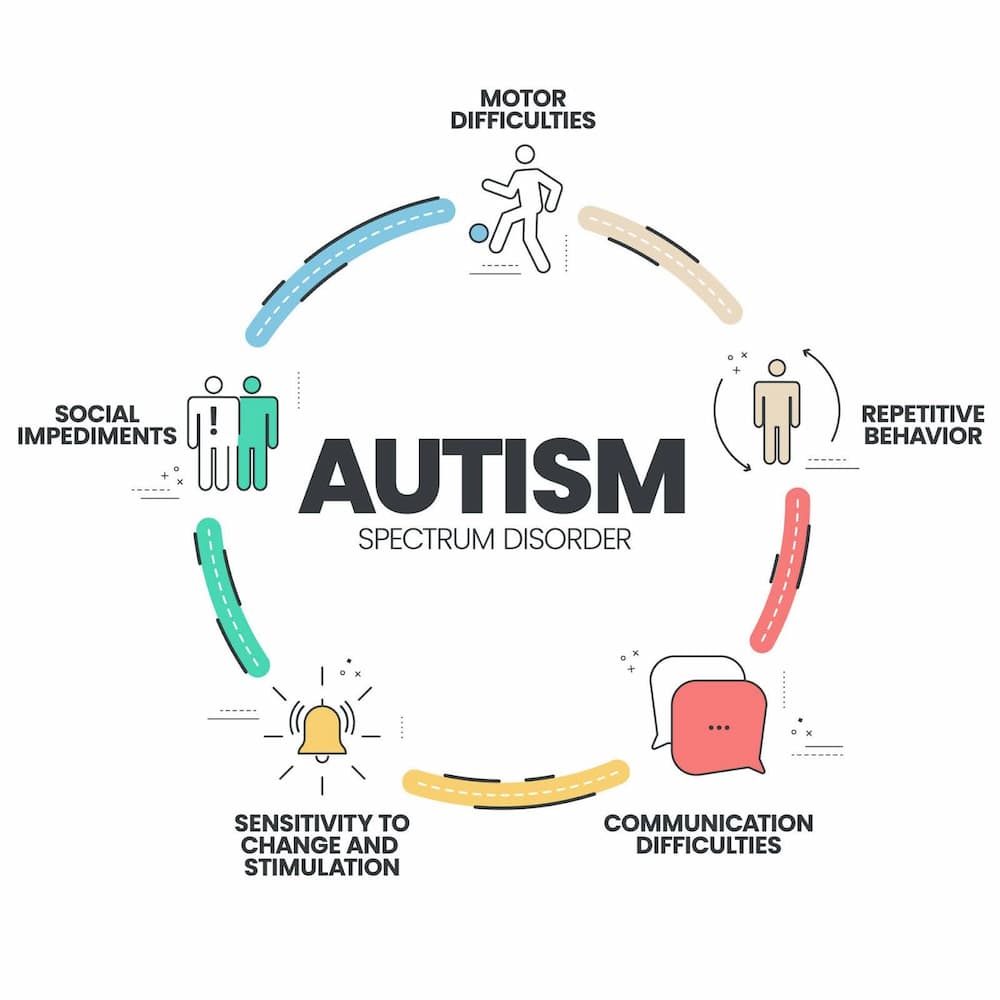Comprehending the Spectrum: A Comprehensive Overview to Autism Recognition
Comprehending the Spectrum: A Comprehensive Overview to Autism Recognition
Blog Article
Checking Out Autism: Strategies for Efficient Communication and Interaction
Efficient communication and communication with people on the autism range necessitate an extensive understanding of their one-of-a-kind demands and preferences. Strategies such as employing clear language, utilizing aesthetic assistances, and fostering consistent regimens can dramatically enhance interaction and minimize anxiety. Additionally, recognizing the relevance of non-verbal cues and shared rate of interests leads the way for purposeful links. Nonetheless, the details of these techniques disclose more factors to consider that merit exploration, especially in exactly how they can be adjusted to specific experiences and diverse contexts. What might these adjustments look like in technique?
Recognizing Autism Spectrum Disorder
Autism Spectrum Condition (ASD) includes a range of neurodevelopmental conditions characterized by challenges in social interaction, communication, and recurring behaviors. The term "spectrum" reflects the varied indications and differing levels of severity experienced by people with ASD. While some might show substantial problems, others may show high-functioning qualities, permitting higher freedom in every day life.
The onset of ASD commonly occurs in early childhood, with indications frequently recognizable by age 2. Very early indications might include postponed speech advancement, minimal eye call, and problems in understanding social signs. The precise etiology of ASD stays unclear, research suggests a combination of hereditary and ecological elements plays a critical function in its development.
Individuals with ASD typically possess one-of-a-kind staminas, such as enhanced focus to detail and remarkable memory abilities. They might battle with recognizing abstract concepts and handling modifications to routine - autism. Therefore, interventions and support customized to private requirements are important for promoting interaction and social abilities. Recognizing the intricacy of ASD is essential for promoting understanding, acceptance, and efficient methods that assist in purposeful communications with individuals on the range.
:max_bytes(150000):strip_icc()/GettyImages-1377530534-2000-fc355c43782b496c947c182d17b8b5db.jpg)
Value of Clear Communication
Efficient communication is essential for cultivating understanding and link, specifically for people with Autism Range Condition (ASD) Clear communication not just helps with social communications yet likewise improves the individual's capability to share their emotions, requirements, and ideas. For individuals with ASD, the subtleties of language can frequently be testing; as a result, making use of simple and unambiguous language is crucial.
Moreover, clear communication helps in reducing disappointment and anxiety that might arise from misconceptions. When messages are shared in a consistent and straight fashion, individuals with ASD are better furnished to translate information precisely, which can dramatically improve their social engagement and involvement in various setups.
Developing routines and making use of visual assistances can additionally bolster clear communication. These approaches offer people with predictable frameworks that help understanding and retention of details. Additionally, proactively being and paying attention patient throughout communications advertises a helpful environment where people with ASD feel valued and comprehended.
Inevitably, focusing on clear interaction not just encourages people with ASD yet likewise cultivates more meaningful links with their peers, caregivers, and the larger area, leading the means for joint connections and comprehensive communications. - autism
Non-Verbal Interaction Techniques
Interaction prolongs beyond words, and for people with Autism Range Disorder (ASD), non-verbal cues play a substantial function in interactions. Non-verbal interaction strategies can consist of faces, motions, body language, and eye contact, all of which serve as vital components for sharing purposes and feelings.
Recognizing and analyzing these non-verbal signals can improve communications with individuals with ASD. For example, a warm smile or open position can develop an inviting environment, urging involvement. Likewise, utilizing aesthetic help-- such as photo cards or symbols-- can connect interaction spaces and aid communicate messages more efficiently.
It is additionally crucial to be conscious of individual area, as people with ASD may have different convenience levels pertaining to proximity. Observing their reactions to physical nearness can educate suitable modifications.

Developing Supportive Settings
Creating a helpful setting is crucial for fostering positive communications and improving the wellness of individuals with Autism Spectrum Problem (ASD) Such environments can significantly reduce anxiety and develop a feeling of safety and security, enabling individuals to reveal themselves more openly.
To attain this, it is vital to take into consideration sensory level of sensitivities that people with ASD might experience. Customizing the physical room to consist of soft lights, very little history noise, and comfy seats can develop a calming atmosphere. Furthermore, making use of constant routines and clear aesthetic timetables click to read more can assist individuals anticipate transitions and minimize unpredictability, further promoting comfort.
Social spaces must be structured to lessen overwhelming stimuli while providing opportunities for involvement in recommended tasks. Assisting in locations marked for peaceful time can likewise serve as a refuge during moments of anxiety. Notably, including components of choice encourages individuals, allowing them to work out company in their environment.

Urging Social Interactions
Fostering social interactions amongst individuals with Autism Range Problem (ASD) requires intentional techniques that focus on convenience and involvement. Establishing foreseeable routines can help minimize anxiety, making social setups more approachable. Developing organized atmospheres with specified functions and responsibilities allows people to engage without the overwhelming stress of disorganized social dynamics.
Incorporating rate of interests and strengths into social tasks can act as a stimulant for communication. For instance, arranging team tasks around shared leisure activities or topics of attraction can promote natural conversations and links. Furthermore, utilizing visual supports, such as social manuscripts or photographic schedules, can help in comprehending social hints and expectations.
Designing ideal social behaviors is crucial - autism. Peers and adults need to demonstrate effective communication techniques, consisting of active listening and turn-taking. Role-playing circumstances can also provide a risk-free area for people to practice these skills
Last but not least, cultivating peer partnerships via inclusive practices is crucial. Urging comprehensive playdates or group outings can develop possibilities for socialization in a comfy setting. By applying these caretakers, methods and educators can considerably enhance social interactions for individuals with ASD, promoting their total social advancement and health.
Conclusion
In verdict, effective interaction and communication techniques are necessary for supporting individuals with Autism Spectrum Condition. Eventually, these techniques encourage individuals with autism to browse social landscapes, advertising their total well-being and enabling the growth of long-term connections.
Reliable communication and communication with individuals on the autism spectrum demand a comprehensive understanding of their special requirements and choices. Clear communication not just assists find here in social communications but likewise enhances the person's capacity to reveal their ideas, requirements, and feelings.Fostering social interactions you can try here amongst individuals with Autism Spectrum Problem (ASD) requires willful methods that prioritize comfort and involvement. By applying these approaches, caretakers and instructors can substantially improve social interactions for people with ASD, advertising their total social advancement and wellness.
In conclusion, reliable communication and communication methods are important for sustaining individuals with Autism Range Problem.
Report this page